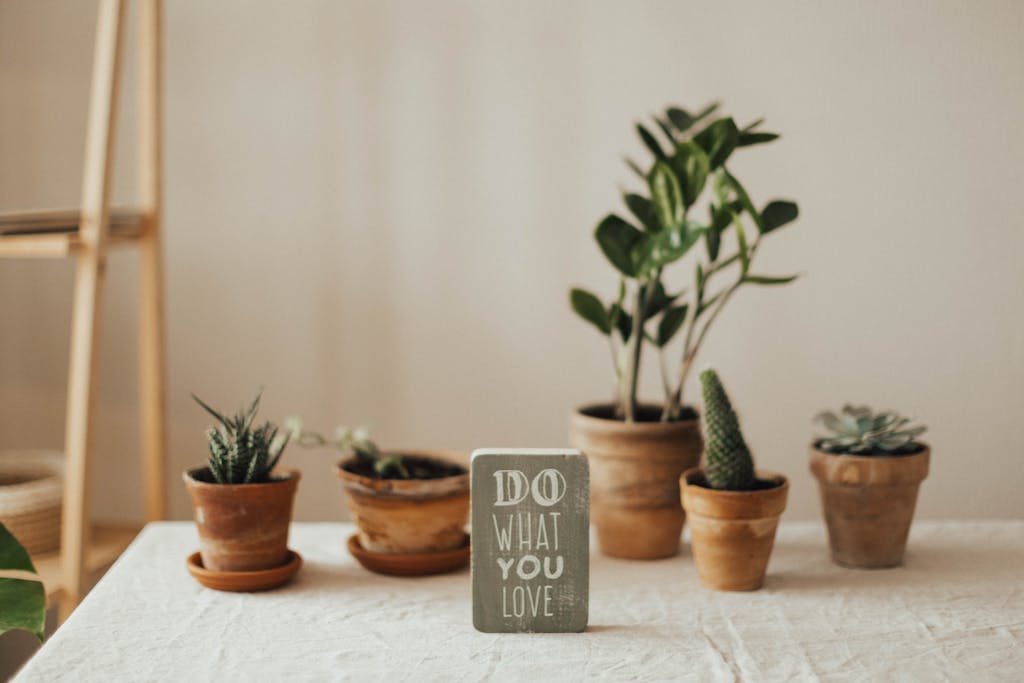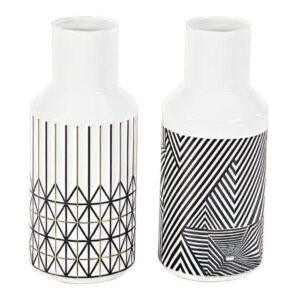5 Best Low Maintenance Indoor Plants That Thrive Even with Minimal Care
In recent years, indoor plants have gained significant popularity, and with good reason. They not only bring a touch of natural beauty to our living spaces but also offer numerous health benefits. However, caring for plants can be a daunting task, especially for those without prior experience.
Fortunately, best low maintenance indoor plants provide an ideal solution for individuals who lack the time or expertise to care for more demanding species. These plants are perfect for those who want to enjoy the aesthetic and health benefits of indoor greenery without the hassle. This article will delve into the top 5 low-maintenance indoor plants that can thrive under the care of even the most novice plant enthusiasts, as well as provide guidance on selecting the right plant for your home and creative ideas for displaying them.
Benefits of Low Maintenance Indoor Plants
Air Purification and Health Benefits
Not only do they help purify the air by removing toxins and releasing oxygen, but they also have been shown to reduce stress, improve concentration, and boost mood. In addition, having plants in our homes can help regulate humidity levels and reduce the risk of illnesses such as colds and respiratory problems.
Therapeutic Benefits of Plant Care
Furthermore, caring for plants can be a therapeutic and rewarding experience, providing a sense of accomplishment and connection to nature.
Accessibility for All
With low maintenance indoor plants, even those with busy schedules or little gardening experience can enjoy these benefits without the stress of high-maintenance care.

5 Best Low Maintenance Indoor Plants for Beginners
1. Snake Plant (Sansevieria trifasciata): This plant is virtually indestructible and can thrive in a variety of light conditions, making it perfect for beginners. It requires minimal watering and can tolerate neglect, making it an ideal choice for those with busy lifestyles.
2. Pothos (Epipremnum aureum): Pothos is another low maintenance plant that is nearly impossible to kill. It can thrive in low light and only needs to be watered when the soil is dry. Its trailing vines make it a great choice for hanging baskets or as a trailing plant on a shelf.
3. ZZ Plant (Zamioculcas zamiifolia): The ZZ plant is known for its ability to survive in low light and with infrequent watering. Its glossy, dark green leaves add a touch of elegance to any space, making it a popular choice for beginners.
4. Spider Plant (Chlorophytum comosum): Spider plants are known for their air-purifying qualities and are incredibly easy to care for. They thrive in bright, indirect light and only need to be watered occasionally.
5. Peace Lily (Spathiphyllum): Peace lilies are not only beautiful, but they are also excellent air purifiers.
They prefer low light and only need to be watered when the soil is dry, making them a great choice for beginners, look them up here – Best Low Maintenance Indoor Plants.

Tips for Keeping Indoor Plants Alive
While low maintenance indoor plants are easy to care for, there are still some basic tips to keep in mind to ensure their health and longevity. First and foremost, it’s important to understand the specific needs of each plant, including its light and water requirements. Overwatering is one of the most common mistakes made by beginners, so it’s important to allow the soil to dry out between waterings.
In addition, it’s important to regularly dust the leaves of your plants to ensure they can effectively photosynthesize. Finally, it’s important to periodically check your plants for pests or diseases and take appropriate action if necessary. Another important tip for keeping indoor plants alive is to provide them with the right environment.
This includes placing them in an area with adequate light for their specific needs, whether that be bright, indirect light or low light. It’s also important to consider the humidity levels in your home, as some plants may benefit from being misted occasionally or being placed near a humidifier. Finally, it’s important to choose the right pot and soil for your plants, ensuring that they have proper drainage and room to grow.
By following these tips, even those with the blackest thumb can keep their indoor plants thriving.

Common Mistakes to Avoid When Caring for Indoor Plants
There are several common mistakes that beginners often make when caring for indoor plants. One of the most common mistakes is overwatering, which can lead to root rot and other issues. It’s important to allow the soil to dry out between waterings and to use pots with drainage holes to prevent water from pooling at the bottom.
Another common mistake is placing plants in the wrong light conditions. It’s important to research the specific light requirements of each plant and place them in an area that meets those needs. In addition, neglecting to dust the leaves of your plants can hinder their ability to photosynthesize and can lead to a buildup of pests and diseases.
Regularly wiping down the leaves with a damp cloth can help keep your plants healthy and pest-free. Finally, it’s important to be mindful of temperature fluctuations in your home, as extreme temperatures can stress your plants and lead to issues such as wilting or yellowing leaves. By being aware of these common mistakes and taking steps to avoid them, even those with the blackest thumb can successfully care for indoor plants.

How to Choose the Right Low Maintenance Indoor Plant for Your Home
Lighting Conditions
The first consideration is the light conditions in your home. Different plants have varying light requirements, with some flourishing in bright, indirect light and others preferring low light conditions. It’s essential to choose a plant that matches the light conditions in your home.
Size and Placement
The size of the plant and its intended placement in your home are also important factors to consider. Some plants are better suited for hanging baskets or shelves, while others are more suitable for tabletops or floors. Consider the space where you plan to place the plant and choose one that fits comfortably.
Lifestyle and Pet-Friendliness
Your lifestyle and the presence of pets or children in your home should also influence your plant choice. If you have a busy schedule or travel frequently, opt for a plant that can tolerate infrequent watering and neglect. Additionally, if you have pets or young children, choose plants that are non-toxic if ingested. By considering these factors and researching different plant options, you can select the perfect low-maintenance indoor plant for your home that will thrive in its environment.
-


-


-

 Ceramic White Vases$60.00
Ceramic White Vases$60.00
Creative Ways to Display Low Maintenance Indoor Plants in Your Home
Once you’ve chosen the perfect low maintenance indoor plants for your home, it’s time to get creative with how you display them. There are countless ways to incorporate plants into your home decor, adding a touch of nature and beauty to any space. One popular option is to use hanging planters or macrame hangers to display trailing plants such as pothos or spider plants.
These can be hung from ceilings or placed on hooks on walls, adding visual interest and greenery to any room. Another creative way to display low maintenance indoor plants is by using unique pots or containers that complement your home decor. Consider using vintage tins, colorful ceramic pots, or woven baskets to add personality and style to your plant displays.
You can also create groupings of plants on shelves or tables, mixing different sizes and types of plants for visual interest. Finally, consider incorporating plants into unexpected places in your home, such as bathrooms or kitchens, where they can thrive in humid environments. By getting creative with how you display your low maintenance indoor plants, you can add a touch of nature and beauty to every room in your home.

Final Words
Low maintenance indoor plants are a great option for those who want to enjoy the benefits of having greenery in their homes without the stress of high-maintenance care. By choosing the right plant for your home, following basic care tips, and getting creative with how you display them, even those with the blackest thumb can keep their indoor plants thriving. Whether you choose a snake plant, pothos, ZZ plant, spider plant, or peace lily, there are countless options for adding beauty and nature to your home with low maintenance indoor plants.
So go ahead and bring some greenery into your home and make sure you have – Aesthetic Apartment: Unveiling 2024’s Top Design and Decor Trends.
FAQs
What are low maintenance indoor plants?
Low maintenance indoor plants are plants that require minimal care and attention to thrive. They are typically able to tolerate a range of light and water conditions and are well-suited for busy individuals or those with limited gardening experience.
What are some examples of low maintenance indoor plants?
Some examples of low maintenance indoor plants include snake plants, pothos, spider plants, peace lilies, and ZZ plants. These plants are known for their ability to thrive in various indoor environments with minimal care.
What are the benefits of having low maintenance indoor plants?
Low maintenance indoor plants offer several benefits, including improving indoor air quality, adding a touch of greenery to indoor spaces, and providing a sense of relaxation and well-being. Additionally, they are ideal for individuals who may not have the time or expertise to care for more high-maintenance plants.
How can I care for low maintenance indoor plants?
Caring for low maintenance indoor plants typically involves providing them with the appropriate amount of light and water. It’s important to avoid overwatering and to ensure that the plants are placed in suitable indoor environments based on their specific light requirements.
What are some tips for keeping low maintenance indoor plants alive?
Some tips for keeping low maintenance indoor plants alive include choosing the right plant for your specific indoor environment, avoiding overwatering, providing adequate light, and periodically checking for signs of pests or disease. Additionally, following the care instructions provided with the plant can help ensure its longevity.






